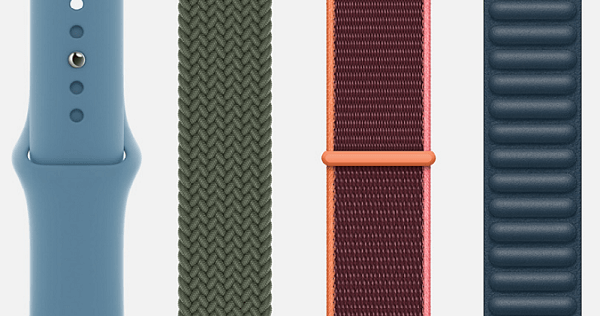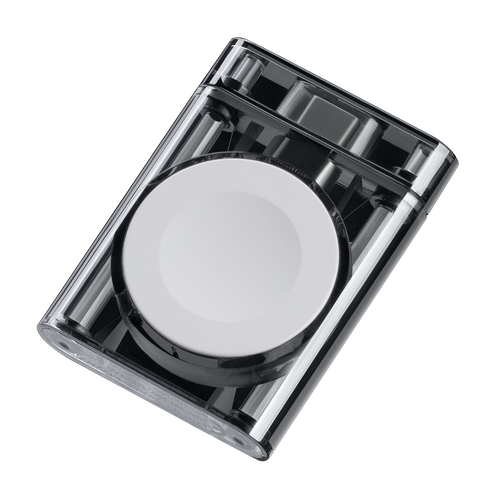Apple has remained the smartwatch market leader for years. In Q4 2020, its market share reached 40% globally, an increase of 6% YoY, according to Counterpoint. Growth is expected to continue in 2021, according to many analysts.
What makes the Apple Watch so popular? Apple Watch bands are made of various materials. Which is the best?
Materials Matter
Apple Watch can tell time and it is an excellent health-tracking and fitness tool. Sometimes it can even save your life. Additionally, it even serves as a fashion accessory.

For something that we wear all day on our wrist, touching our skin, material plays a crucial role in defining the style, durability, and comfort of the Apple Watch band. Some materials just last longer than others. Some are more skin-friendly while some might cause skin issues.
Which is the Best Apple Watch Band Material?
There are so many Apple Watch band options that they're often categorized by the material. Have you ever wondered which material is the best for an Apple Watch band? Which one is the most comfortable? Durable? Or fashionable?
Today, let's take a look at some of the differences between Apple Watch bands from the material perspective.
Metal

Metals commonly used for an Apple Watch Band include platinum, gold, stainless steel, and titanium.
Metals can last for generations, notably the precious ones like platinum and gold, which are chemically stable or inactive to oxygen, moisture, and ordinary acids. Metal-styled Apple Watch bands don't need much maintenance and tend to attract those who often dress up for formal, luxury occasions. Like a fancy tailcoat, a shiny bracelet shows your status.
Not everything that shines is good, though. Metal Apple Watch bands have a very high luster, which makes scratches more noticeable. You can temporarily remove the scar by buffing, but the mark is there forever unless you polish it to a level that makes the surface uneven.
Metals are also cold. Wearing a stainless steel Apple Watch band during the dog days of summer is a "cool" experience, but no one wants to be "cooler" in winter.
Don't forget how heavy and pricey metals can be.
Leather

Leather bands are probably the most common in the traditional watch industry. The material maintains its superior position in the smartwatch realm, mainly because of its comfort and excellent quality. Made of skins from cattle hides, goats, and other animals, leather is, undoubtedly, skin-friendly.
Leather Apple Watch bands can go with formal and casual attire as they are elegant yet low-profile.
How about the downsides? If you've ever used a leather watch strap or belt, you know how ugly it can turn after some time. It discolors, rips, and cracks as it ages. Leather also absorbs sweat and dirt, which prevents it from breathing. And when that happens, it's no longer skin-friendly.
Nylon/Fabric

Nylon is a tough synthetic fabric or polyester and is incredibly easy to produce. You can buy nylon Apple Watch bands with varied patterns and colors that don't cost much.
Nylon Apple Watch bands are lightweight, soft, and smooth but are unfortunately not resistant to damage. You might notice some bits of fluff and ladders soon after you start using the band without knowing how it happened.
It's also water absorbent, so it's not a good idea to wear a nylon watch band in summer as it quickly gets wet and smelly. Oh, how it loves sweat!
Silicone

Usually found in outdoor and sealing applications, silicone is a stretchy synthetic material with excellent weathering and chemical resistance. Apple released a new type of watch strap along with the Series 6 last year: the Solo Loop made from liquid silicone rubber. Different from other Apple Watch bands, the Solo Loop is stretchable, requiring no buckles or clasps. You can bend or pull it without worrying about damaging it.
Silicone Apple Watch bands have a smooth finish, making them comfortable to wear. However, they're not as attractive as the gold or leather watch bands, so they're not going to be worn by the fashion elite.
Silicone is swim-proof and sweat-proof - great news for sportspeople. Unfortunately, it's a dust magnet, attracting masses of dust particles compared to other materials, so it needs to be cleaned regularly.
Ceramic

Ceramic, harder than stainless steel or gold, is challenging to work with, which means it's not an everyday watch or watch band material. It does, of course, fit the "luxury" range, so companies manage to process it into watch faces and bands.
Ceramic boasts incredible durability, yet it's lightweight despite looking heavy and inflexible. While it's highly resistant to scratches, ceramic is brittle and can easily shatter on a hard surface, even from a low height.
One of ceramics best selling points is its hypoallergenic quality. It's one of the best band options for people with sensitive skin as many people experience reactions to certain materials, such as nickel, aluminum, or acrylates.
Carbon Fiber

Light yet Solid
Lighter than aluminum and more robust than iron and steel, carbon fiber is surprisingly versatile. From spacecraft and cars to medical machines, it is becoming commonplace in many industries.
Rare and Unique
That said, carbon fiber watch bands are rarely seen since the material is challenging to work with. The machining process is so precise that it takes considerable time to cut just one band. But the fact that many people love the look of carbon fiber makes it difficult to pass over by manufacturers. Instead of crafting from the rigid material, they chose to make leather or nylon watch bands with the carbon fiber look or finish.
Resistant to Water and Most Chemicals
Genuine Carbon Fiber Watch Band is impervious to water and sweat, staying clean even throughout the summer. It won't turn metallic cold in winter, either. And carbon fiber is resistant to most chemicals, so cabon fiber Apple Watch bands can outlast those made of leather, silicone or plastic. They won't degrade or wear easily.
PITAKA is the first brand to produce geniune carbon fiber Apple Watch bands. Each link is engineered to fit together and curve around the wrist, avoiding discomfort. The classic dark weave and stylish design are striking, even to fashion industry icons.
Carbon fiber is naturally black. What if we want more colors? Later, PITAKA developed a new technology to combine carbon fiber and aramid fiber to produce Apple Watch bands. These colorful bands are exceptionally durable and lightweight with different styles to suit various tastes and occassions.

You might be interested in:









